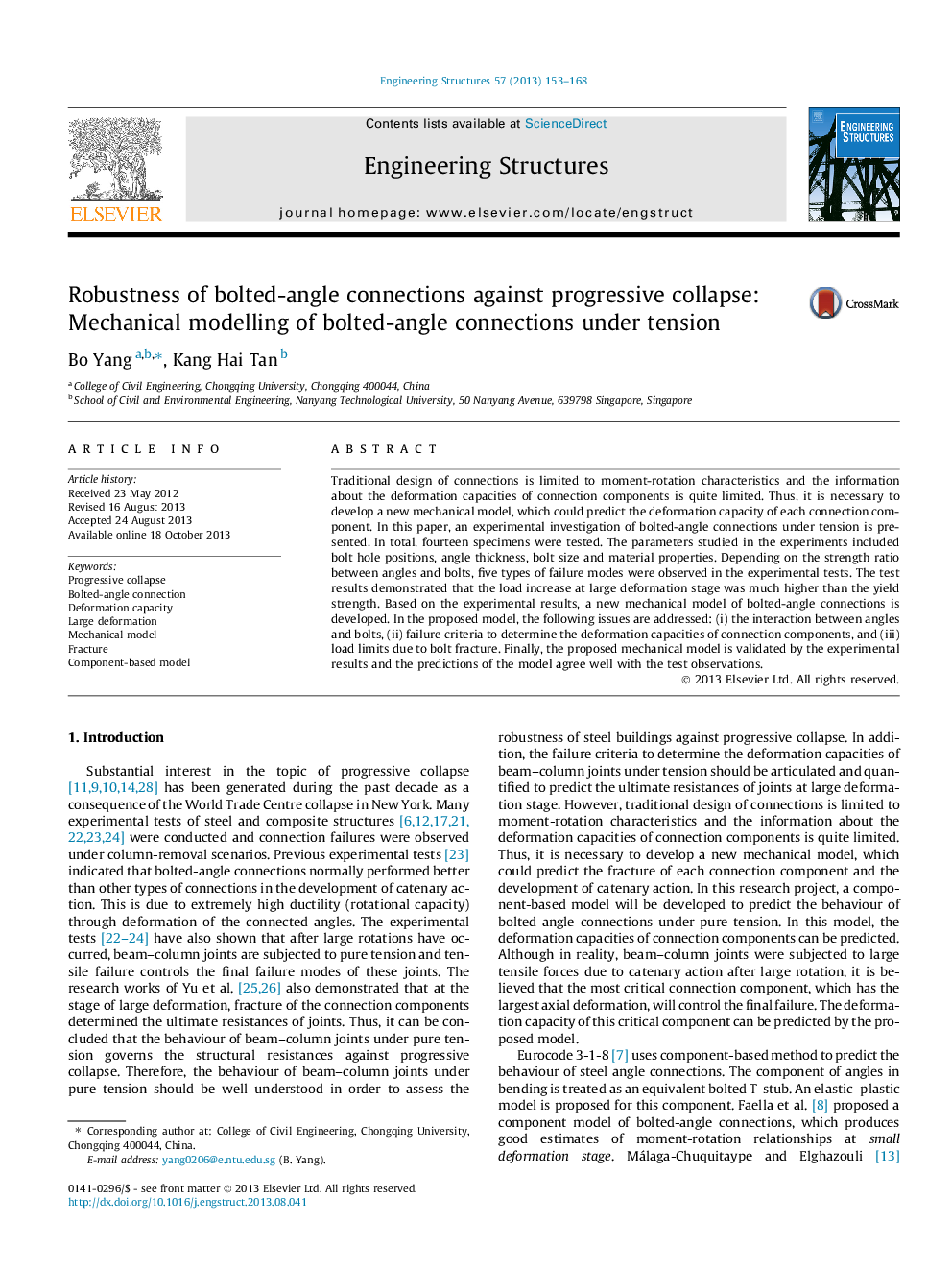| Article ID | Journal | Published Year | Pages | File Type |
|---|---|---|---|---|
| 6741062 | Engineering Structures | 2013 | 16 Pages |
Abstract
Traditional design of connections is limited to moment-rotation characteristics and the information about the deformation capacities of connection components is quite limited. Thus, it is necessary to develop a new mechanical model, which could predict the deformation capacity of each connection component. In this paper, an experimental investigation of bolted-angle connections under tension is presented. In total, fourteen specimens were tested. The parameters studied in the experiments included bolt hole positions, angle thickness, bolt size and material properties. Depending on the strength ratio between angles and bolts, five types of failure modes were observed in the experimental tests. The test results demonstrated that the load increase at large deformation stage was much higher than the yield strength. Based on the experimental results, a new mechanical model of bolted-angle connections is developed. In the proposed model, the following issues are addressed: (i) the interaction between angles and bolts, (ii) failure criteria to determine the deformation capacities of connection components, and (iii) load limits due to bolt fracture. Finally, the proposed mechanical model is validated by the experimental results and the predictions of the model agree well with the test observations.
Keywords
Related Topics
Physical Sciences and Engineering
Earth and Planetary Sciences
Geotechnical Engineering and Engineering Geology
Authors
Bo Yang, Kang Hai Tan,
